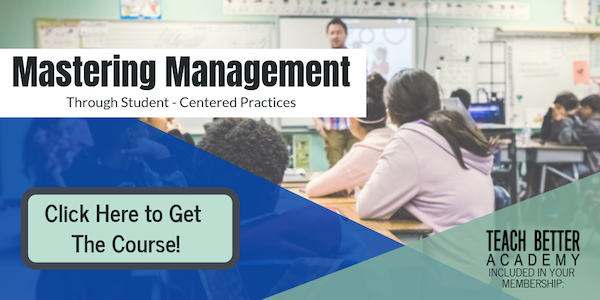In This Post:
- Everyone is happy when those expectations are met and we LOVE it when our students exceed our expectations!
- If we are working daily to offer our students opportunities to meet these expectations the vast majority will, at a minimum, meet them.
- By setting the bar high, being consistent, and offering our students feedback on their progress, we ensure our students will meet and exceed our expectations
Prefer Audio? Listen to this post here. Or get it on your favorite podcast player!
As educators, we work tirelessly designing differentiated lessons, inspiring projects, captivating activities, inclusive rules that foster positivity/respect, and much more. All this in efforts to ensure our students learn, develop, and be as successful as possible. Our knowledge of content, experiences teaching/coaching, and countless amounts of trial and error has led us to expect a certain level of the aforementioned learning and development to take place. Everyone is happy when those expectations are met and we LOVE it when our students exceed our expectations!
Whether it be homework, participation, group projects, or classroom rules, expectations can be set and met. Click To TweetRegardless of what dictionary we find the definition of expectation in, we can more or less agree that an expectation is the belief that something will happen or someone will achieve “xyz.” If we are working daily to offer our students opportunities to meet these expectations the vast majority will, at a minimum, meet them. I believe this is true regardless of content area, discipline, or profession for that matter.
A remarkable thing about humans is we have an uncanny ability to rise to the occasion. We inherently like to overcome obstacles and meet challenges, so if we set low expectations (for ourselves or others) they will likely be met. But at the same time, if we set the bar high we may surprise ourselves with our ability to reach those expectations even when they seem “lofty.”
Whether it’s building a classroom culture, learning skills, or retaining information, how can we ensure that our students will meet and/or exceed our expectations? There are 3 things we can do for our students to help set them up for success:
1) SET THE BAR HIGH
Do it, even if it might seem like a stretch, even if we’re a little unsure! Go ahead and push the limits, challenge our students to reach higher than they have before. Once we decide how high to set the bar, make it known! One of the most important and often most neglected aspects of setting expectations is the fact that we sometimes forget to clearly state what those expectations are AND how high the bar has been set.
We can’t be disappointed or upset at students who don’t meet the expectations they don’t know exist. Now that the students know what they are and where the bar is, be proud of the bar being set so high, let them know that it is special, exciting, and an achievement to meet/exceed them (after all, you set the bar so high even you were unsure)!
[scroll down to keep reading]2) BE CONSISTENT
Do not change, do not waiver! Consistency is key to helping student reach the bar. As soon as we falter on an expectation, the curtain is lifted. Students see that and think it is OK to do less than their best, they see and think it’s OK to turn something in late, or it’s OK to be disrespectful to a peer.
All classrooms throughout the year have ebbs and flows, the consistency of our expectations and the height at which we set the bar is what students can rely on to ride out those waves. By no means am I saying that expectations cannot change. However, if they do, we must not forget to go back to step 1 and re-identify what they are and make them known to the class or group of students.
3) GIVE FEEDBACK
Let the students know how they are doing! Let them know where they stand on that road to meeting/exceeding our expectations. Praise them as they make steps in the right direction! Shout it from the mountain tops when they reach the bar. Share it with other students, classes, and teachers!
All of us are much more likely to continue to do something if we are praised for what we have been doing, our students are no exception. Conversely, it is important to let the students know when they have acted in way that is counteractive to expectations. Failure to reach the bar due to ability, skill, or knowledge level should be met with positivity and the understanding that failure is the best teacher (more on that in a later blog).
When it comes to behavior or actions, we can often be quick to reprimand, discipline, or even yell. However, simply reminding a student “that’s not how we do it here” or “these have been the expectations from day 1” can be powerful phrases when backward steps are taken.
Whether it be homework, participation, group projects, or classroom rules, expectations can be set and met. By setting the bar high, being consistent, and offering our students feedback on their progress, we ensure our students will meet and exceed our expectations. In doing so, they experience success in the classroom, in the gym, on the field, and in life.
About Michael Jennings
Michael Jennings has been teaching and coaching for nearly 10 years. He has a Master’s Degree in both Secondary Education: Curriculum & Assessment and Exercise Physiology. He is a Certified Strength and Conditioning Specialist through the National Strength & Conditioning Association. He has nearly a decade of experience in various youth development fields at both the public and private sectors. Michael is a proponent of physical literacy, long term athletic development and the holistic development/education of his students. He is a regular presenter at local, state, and regional conferences. His presentation topics have included: showing student growth, assessment & feedback, curriculum development, developing a culture of physical activity in schools, long term athletic development, and much more.




